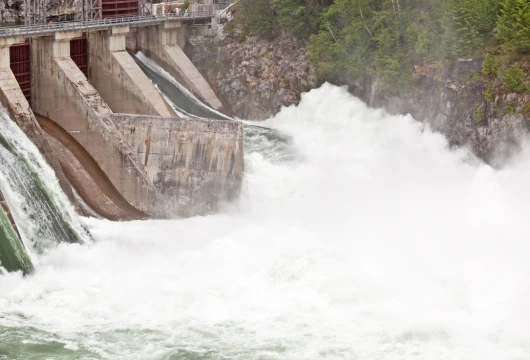H1: CEA Recognizes Hydrokinetic Energy Technology for Sustainable Growth
In a significant step toward advancing renewable energy solutions, the Central Electricity Authority (CEA) has officially recognized the indigenously developed Surface Hydrokinetic Turbine (SHKT) technology under the Hydro Category. This innovation underscores India’s commitment to achieving net-zero emissions and fostering sustainable development in the power sector.
Revolutionizing Renewable Energy: The Promise of Hydrokinetics
SHKT technology represents a breakthrough in renewable energy. It harnesses the kinetic energy of flowing water to generate electricity. Unlike conventional hydroelectric systems that rely on potential energy created by large civil structures like dams or barrages, SHKT operates without such infrastructure.
This transformative technology is not only cost-effective but also versatile. It can generate power in locations with minimal or no head—essentially the height difference necessary for traditional hydroelectric systems.
According to experts, SHKT can provide clean, round-the-clock base-load renewable energy in areas with challenging grid access. With an estimated generation cost of just ₹2-3 per unit, it offers an economically viable solution for energy buyers and producers.
A Milestone for India’s Renewable Energy Transition
The adoption of SHKT technology marks a significant milestone in India’s renewable energy journey. By leveraging the country’s extensive water resources—from canals to hydropower tailrace channels—SHKT can generate gigawatts of clean energy.
CEA’s recognition of this technology highlights its potential to reshape how India approaches energy generation.
“This innovation provides a win-win solution,” a senior CEA official stated. “It supports the nation’s renewable energy targets and ensures sustainability and economic feasibility.”
Why Hydrokinetic Energy Is a Game-Changer
- Environmentally Friendly: SHKT eliminates the need for large-scale infrastructure projects like dams, reducing environmental disruption and preserving ecosystems.
- Cost-Effective: With a low generation cost of ₹2-3 per unit, SHKT is affordable for energy buyers and generators.
- Ease of Installation: These turbines are simple to install and maintain, making them ideal for remote and underserved areas.
- Scalable Potential: India’s vast water infrastructure offers immense opportunities to harness hydrokinetic energy at a gigawatt scale.
- Reliable Power Supply: SHKT provides round-the-clock renewable energy, making it a reliable solution for meeting growing electricity demands.
Advancing Toward Net-Zero Emissions
India’s renewable energy goals and the global push for net-zero emissions demand innovative solutions that bridge the gap between sustainability and practicality. SHKT technology perfectly aligns with these objectives, offering a scalable, eco-friendly, and economically viable energy generation method.
CEA’s recognition of SHKT aligns with India’s broader energy transition strategy, which aims to reduce reliance on fossil fuels and promote cleaner, greener alternatives.
Leveraging India’s Water Infrastructure
India has an extensive network of water bodies, including canals, rivers, and hydropower tailrace channels. These resources, often underutilized, hold tremendous potential for renewable energy generation through SHKT technology.
Deploying hydrokinetic turbines across these water bodies could significantly boost India’s renewable energy capacity, creating a robust and resilient energy ecosystem.
Empowering Communities with Renewable Energy
SHKT technology also holds promise for rural and underserved communities, particularly in regions with poor grid accessibility. Providing a reliable and affordable electricity source can empower these communities, drive economic development, and improve quality of life.
“Hydrokinetic energy can be a game-changer for remote areas,” said an industry expert. “It ensures energy access without the environmental and economic challenges associated with conventional systems.”
Future Prospects and Industry Implications
As India continues to explore innovative energy solutions, SHKT technology is poised to play a pivotal role in shaping the future of renewable energy. CEA’s recognition sets the stage for widespread adoption and integration into the country’s energy strategy.
Key stakeholders, including policymakers, industry leaders, and community organizations, are now focusing on scaling this technology to maximize its impact. By fostering partnerships and investments, India can unlock the full potential of hydrokinetic energy.
A Cleaner, Greener Tomorrow
CEA’s recognition of Surface Hydrokinetic Turbine technology is a testament to India’s unwavering commitment to sustainability and innovation. As the nation continues championing renewable energy, SHKT offers a pathway to a cleaner, greener, and more resilient future.
By embracing hydrokinetic energy, India can achieve its net-zero targets and set a global benchmark for renewable innovation.
Join the journey toward sustainable energy solutions and be part of a movement transforming power generation’s future.
For more in-depth analysis and inspiring climate news, click here.

